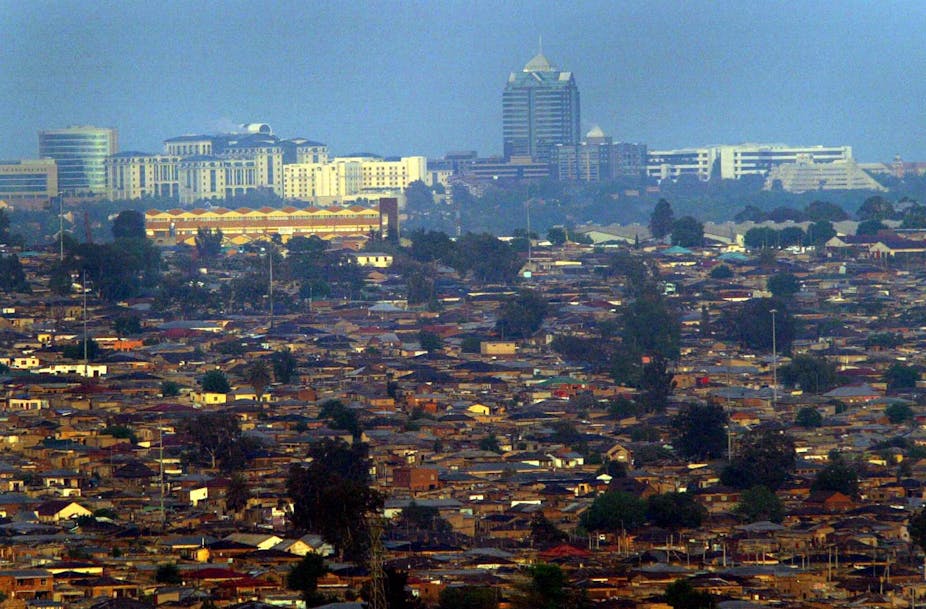It has become popular in South African government circles to talk of “reversing the legacies of apartheid”. These are factors which continue to limit black people’s access to jobs and economic opportunities.
The lofty and noble ambitions for a post-apartheid future raise two important questions.
The first is: do policymakers really understand the complex system that gave rise to apartheid’s legacies? Not the monolithic idea of apartheid, but the inner workings. The second question is: do South Africans and their leaders know what the alternative outcome is that would replace the status quo? Can the country envisage its own good society?
If the answer to these questions is no, the country won’t progress.
These questions raise a third question that is critical to the success of eradicating apartheid’s legacies. It is whether South Africans understand the positive systemic dynamics they would have to create, and how to go about creating them, to deliver on the promise of democracy.
Simply put, undoing apartheid requires understanding how it worked. This includes understanding the Bantu education as well as the job reservation systems and the state-led interventionist economic system of industrialisation.
These all coalesced to create a social phenomena that’s been inherited – and remains in place. They spawned unique situations in each South African town and city. And combined to create stark inequalities.
This is why, in matters of policy-making and governing, understanding the systemic complexity of interrelated forces is crucial to avoiding failure as well as to trying to ensure that well-intentioned interventions don’t have unintended consequences.
Simplistic thinking needs to be avoided
Apartheid legacies can be thought of as two forms of socio-economic equilibrium arising from a single stubborn complex system. The legacies are notoriously hard to alter in spite of massive investments in, for instance, education, social grants and basic necessities such as water, electricity and housing.
The equilibriums will perpetuate unless there are systemic interventions.
An approach that fails to harness the dynamics at play will inevitably find itself producing negligible impacts. The old equilibriums will simply reassert themselves. To demonstrate this dynamic, let’s consider the development of an area such as the Vaal Triangle.
Consider the example of a massive state-funded project, the giant energy and chemical company Sasol. It was originally a state-owned company formed in 1950 to make oil from coal.
In Sasolburg, the town adjacent to the plant, the proverbial 60-year-old white suburban resident probably studied a technical trade or engineering in the 1980s, then worked for Sasol for decades. He probably sent his children to university in Bloemfontein or Potchefstroom. These two larger towns are not that far away.
His family’s inter-generational progress would have been marked by increasing education, income and prospects for better health and a good standard of living. These benefits were the result of a synergy, in a very localised sense, between many subsystems – including the exploitative labour market and other practices of apartheid.
By contrast, his proverbial black counterpart probably worked as a gardener or domestic worker for a white family, sending his or her children to a poorly equipped school. The children would have gone on to the city in search of work, only to end up being gardeners or domestic workers. This is a generational and systemic tragedy, 100 years in the making.
For policymakers and those in government, this raises the question of whether to intervene directly or systematically.
Direct intervention says simply: replace the child of the white family working for Sasol, now a global chemicals and energy company, with the child of the black family, where possible, through job reservation on the basis of race.
This direct approach has already taken the form of black economic empowerment as well as affirmative action and preferential procurement in many firms and state-owned enterprises. But it’s had minimal transformational impact. That’s because it is not systemic.
Systemic intervention
The alternative systemic approach, as in the case of Sasolburg, would be to appreciate that broader impact that the creation of Sasol had.
The system of technical education, then aligned with Sasol’s need for chemical engineers, produced the human capital, and set off a chain reaction of upward mobility in the lives of white beneficiaries. This led to dynamism and innovation. It spawned market opportunities beyond the coal industry. This resulted in many related businesses that have their historic roots in the state-owned company. It now has clients in markets as far afield as the US, EU and Asia.
The black compatriots in the area did not benefit from the system, creating a legacy of exclusion.
A systemic approach raises the prospect for today’s policymakers of harnessing the economic flywheel that has already been created in Sasolburg to deliver a path for progress for the area’s disadvantaged youth.
It asks how education, land-use, local economic and global market systems and trade can be aligned and harnessed for generational transformation. How does government build a bridge between the “black” township school, and the industrial cluster in the area? What are the pathways to bringing disadvantaged workers into technically orientated small, medium and micro enterprises? How does government enable Sasol’s commercial success, and use it as a champion of transformation. That would require partnership and collaboration between government and business.
Tackling systemic exclusion
In the absence of such a systemic perspective that takes account of the interdependency of these systems, apartheid legacies will continue to be perpetuated. In the absence of a systemic intervention, the country will simply replace a small group of privileged “white” citizens with a small group of privileged “black” citizens.
Instead, the country should devise a tailor-made systemic intervention through the integrated development plan for each town and city. Such systemic intervention should be guided by its own peculiarity and potential. Failure to do so will mean that future generations will still suffer from structural unemployment and systemic exclusion.
That is a tragedy the country dare not allow.

